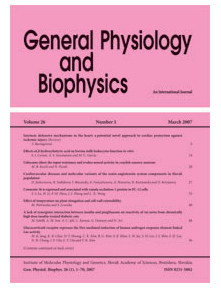General Physiology and Biophysics Vol.44, No.1, p, 1–11, 2025
|
| Title: Pulmonary alveolar proteinosis: Clinical and morphological overview of a rare disease associated with macrophage dysfunction |
| Author: Brigita Javorská, Róbert Slivka, Barbora Durcová, Adela Vrbenská, Jozef Škarda, Janka Vecanová, Natália Hvizdošová, Mária Makovická, Vojtěch Kamarád, Jozef Muri |
|
Abstract: Pulmonary alveolar proteinosis (PAP) is a rare disease characterised by excessive accumulation of surfactant components in alveolar macrophages, alveoli, and peripheral airways. The accumulation of surfactant is associated with only a minimal inflammatory response but can lead to the development of pulmonary fibrosis. Three clinical forms of PAP are distinguished – primary, secondary and congenital. In recent years, significant findings have helped to clarify the ethiology and pathogenesis of the disease. Apart from impaired surfactant protein function, a key role in the development of PAP is played by signal pathway of granulocyte and macrophage colonies stimulating growth factor (GM-CSF) which is necessary for the functioning of alveolar macrophages and for surfactant homeostasis. Surfactant is partially degraded by alveolar macrophages that are stimulated by GM-CSF. The role of GM-CSF has been shown especially in primary PAP, which is currently considered an autoimmune disease involving the development of GM-CSF neutralising autoantibodies. Clinically, the disease may be silent or manifest with dyspnoeic symptoms triggered by exertion and cough. However, there is a 10 to 15% rate of patients who develop respiratory failure. Total pulmonary lavage is regarded as the standard method of treatment. In addition, recombinant human GM-CSF has been studied as a prospective therapy for the treatment of PAP.
|
|
| Keywords: Pulmonary alveolar proteinosis — Surfactant — Macrophages — GM-CSF signalling |
|
|
|
| Year: 2025, Volume: 44, Issue: 1 |
Page From: 1, Page To: 11 |
doi:10.4149/gpb_2024038
|
|
 download file download file |
|
|
|
|
 download file
download file
